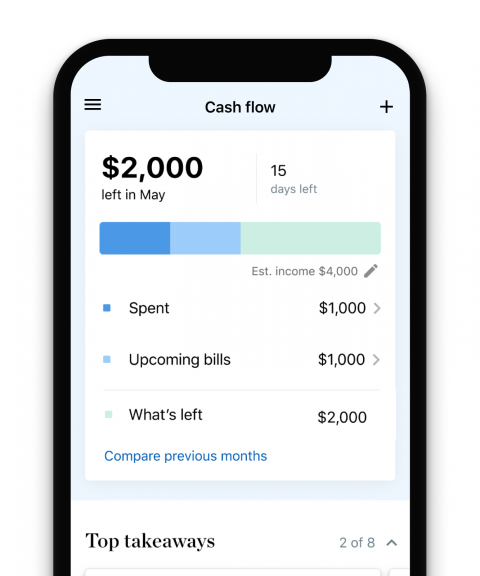Updated July 11.
The latest inflation data shows price growth for everyday goods and services are continuing to slow down, according to the consumer price index for June released on July 11. The report is a promising one for consumers, the White House and, hopefully, the Federal Open Market Committee as it heads into its July meeting next week.
“We don’t take this as any sort of victory lap,” says Jared Bernstein, chair of the White House Council of Economic Advisers. “We take this as a sign that the cost-cutting measures that we’re doing under the president’s agenda are having some impact, but we have got to build on that progress. Our work is not done here.”
Here’s why Bernstein says this is a really important report and how it fits into the larger economic picture.
On the report overall: There’s a two-fold interpretation to the report, according to Bernstein. “One is the price story — very important in June that we really saw some cooling in inflation. But the other point is that wages are beating prices and that means more buying power for paychecks.”
On rent, as part of inflation: Rent inflation has been coming down for awhile, but was lagging for longer than expected before it showed up in the CPI data. In June, the report showed that shelter prices are easing, which Bernstein says is likely to be a “lasting improvement.” He says, “For a long time, this has been a little bit of ‘Waiting for Godot’ kind of story in the inflation report,” says Bernstein. He adds that prices are still “too high” for a lot of people.
On consumer sentiment: “I'm not interested in countering how people feel about the economy,” says Bernstein. “I think what I'm much more interested in is hearing how they feel and taking it very seriously.”
On what it takes for inflation shock to wear off for people: Two things need to happen for people to feel better about the current price dynamics, says Bernstein. “One is that enough time has to pass so they can kind of reorient to the prices that are in the economy now,” he says. The second: “Their paychecks go up.”
Current index: The consumer price index, or CPI, fell 0.1% in June after holding steady in April, according to the most recent report released July 11. The year-over-year increase was 3%.
The CPI measures the change in prices paid by U.S. consumers for everyday goods and services, like groceries, gas and rent. It’s calculated by the U.S. Bureau of Labor Statistics and tracks real-world impacts of inflation on consumers. Every month, the BLS releases updated CPI data, showing monthly and annual changes in average prices.
What happened to CPI in June?
The CPI actually declined between May and June, which means prices moved down, on average, from month to month. Over the past 12 months, the CPI increased 3%.
Core CPI — that is, all items less food and energy — rose 0.1% over the last month and 3.3% over the past 12 months. It is the smallest year-over-year increase in core CPI since April 2021, according to BLS.
In recent months, CPI increases were attributed to the combination of higher housing and gas prices. Housing prices, including rent, went up again in June, but gas prices declined 3.8%, according to the report.
Here’s a look at the CPI’s biggest indexes:
Housing prices: The shelter index rose 0.2% in June and is up 5.2% from the same time a year ago.
Energy prices: The energy index decreased 2% in June. Over the past year, the energy index increased 1%.
Food prices: The overall food index increased 0.2% since last month and 2.2% compared to a year ago. Grocery prices rose 0.1% from May to June, and the cost of dining out rose 0.4%.
The latest CPI report shows prices increased month-over-month for motor vehicle insurance, household furnishings and operations, medical care and personal care.
However, prices decreased — a concept known as deflation — in some areas, as well. Airline fares, used cars and trucks and communication were among the goods and services that got cheaper last month.
» MORE: Why is food still so expensive?
Why does CPI matter?
The CPI is used as a proxy for inflation. Typically, Americans can expect the CPI to increase between about 1% and 4% each year, based on data from the last couple of decades. However, the Federal Reserve wants to see the annual inflation rate stay around 2%.
The CPI started to rise above normal levels during the pandemic until it appeared to peak in June 2022, when the year-over-year increase was reported at 8.9%. The Fed took steps to slow down inflation by increasing the fed rate. The effort appeared to be working based on the CPI’s steady downward trend in 2023. But that progress seemed to stall in the first three months of 2024.
In June, the CPI decreased, beating economists’ expectations, according to Morningstar, an investing firm. The news will put more pressure on the Fed to start cutting rates.
CPI vs. PPI
The producer price index, or PPI, also is a measure of inflation calculated by the BLS. However, the PPI focuses on the change in prices from the seller’s point of view, taking into account how much sellers pay producers for their goods.
This index tracks average price changes for domestically produced goods, services and construction.
CPI vs. PPE
Like the CPI, the personal consumption expenditures, or PCE, is a price index that measures changes in how much consumers pay for goods and services. However, the PCE price index is calculated by a separate federal agency called the Bureau of Economic Analysis.
The BEA uses a different formula to calculate inflation (and deflation, when prices decrease) and weighs categories of goods and services differently.
The two indexes also have different scopes. Unlike the CPI, the PCE includes spending done on behalf of consumers.
One common example is medical spending. The CPI takes into account only what a household spends out of pocket on medical care. The PCE price index records that spending as well and adds what employers or government programs pay on consumers’ behalf through insurance plans.
Because the PCE and CPI differ in their formula, weighting, scope and other effects, their results are different. The Federal Reserve prefers to use the PCE price index to measure inflation. This comes into play when the Fed makes monetary policy decisions, such as whether to raise the federal funds rate.
How is CPI calculated?
To calculate the CPI, the bureau collects more than 80,000 prices per month from sellers and retailers in 75 urban areas. The price data captures the spending patterns of various populations.
The most commonly cited version of the index is the Consumer Price Index for All Urban Consumers (CPI-U), which shows the change in prices for the average household living in U.S. cities. The CPI-U represents more than 90% of U.S. consumers, making it the most broadly applicable.
The BLS groups goods and services into categories, such as food, shelter, energy and medical care services. Average prices for each item are aggregated and used to calculate the CPI with complex statistics. Everything included in the index is mathematically weighted so that each item or category’s effect on the index reflects its relative importance to consumers. The table below shows the relative importance assigned to some categories in the most recent CPI report.
Group | Relative importance in CPI |
|---|---|
Shelter | 36.24% |
Food | 13.39% |
Energy (fuel, utilities) | 7.00% |
Transportation services (insurance, airfare, etc.) | 6.53% |
Medical care services | 6.50% |
New vehicles | 3.59% |
Source: Bureau of Labor Statistics
As an index, the CPI shows where current average prices for a particular basket of goods and services land on a scale relative to a historic reference point. But it’s more common to talk about the CPI’s inflation rate, which illustrates how much prices have increased between two points in time (or decreased, in the event of deflation).
That rate is calculated by determining the current index value of the basket of goods and services, then dividing it by the value of those same goods and services from a year or month prior. The result is then multiplied by 100.
Typically, you’ll see the inflation rate reported for all items included in the CPI. But it's also common to see it reported without energy or food price changes, because those categories tend to be more volatile. This version of the index is known as “core inflation.”

How is CPI used?
The CPI is closely watched as an economic indicator. As a proxy for inflation, it can help show how the economy is doing overall. But that’s not its only purpose.
Private employers may use the CPI to determine how much to pay workers. The federal government also uses the index to reset eligibility levels for government assistance programs, federal tax brackets and cost-of-living increases. For example, the Social Security Administration announced in October the biggest cost-of-living increase in 40 years. SSA bases its annual adjustment on the CPI.
Additionally, anyone can use the index to calculate buying power by adjusting historical values to see how they stack up in today’s dollars. For example, in 1972, median household income was $11,120, according to the U.S. Census Bureau. Factoring in inflation, that income had the same buying power as $85,003 in today’s dollars, according to the CPI inflation calculator on the BLS website.
Next CPI report
The next CPI report will be released Aug. 14. It will detail how average prices changed in July.



